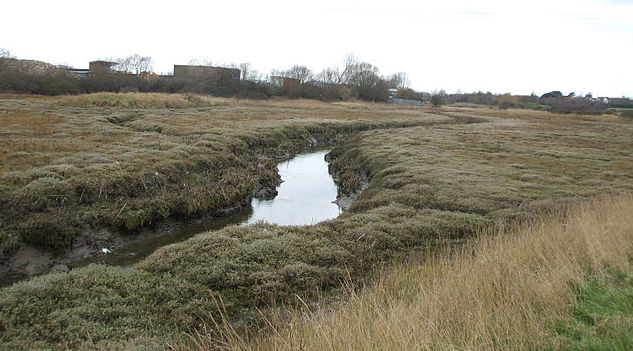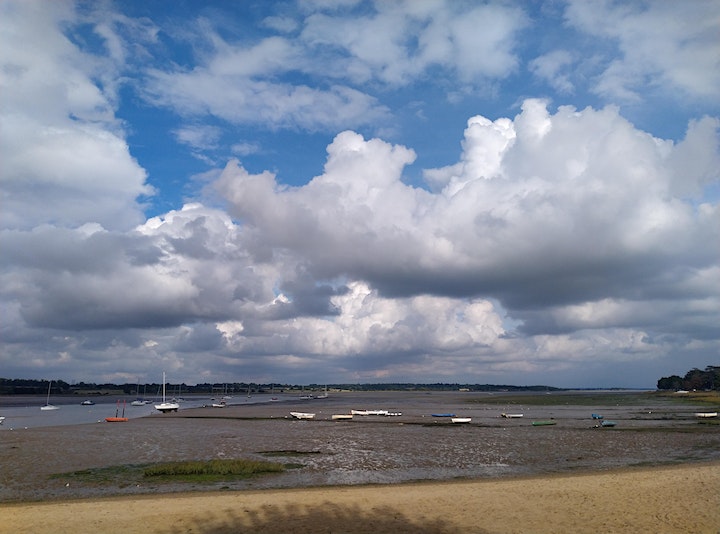 My title is a paraphrase of Margaret Thatcher’s dissing of Hackney, but prejudice against Essex is knee-jerk amongst loads of middle class folks who didn’t like her. Much of the prejudice is about culture and social class – Essex is said to be full of cockneys, wide boys, girls with silicone breasts and botoxed lips, Brexiteers – but the prejudice also applies to the landscape, even the coastal edges along the North Sea. A few Essex destinations are popular to visit, such as Southend-on-Sea, with its long pier; otherwise it’s Suffolk people visit, making a point of skipping over Essex.
My title is a paraphrase of Margaret Thatcher’s dissing of Hackney, but prejudice against Essex is knee-jerk amongst loads of middle class folks who didn’t like her. Much of the prejudice is about culture and social class – Essex is said to be full of cockneys, wide boys, girls with silicone breasts and botoxed lips, Brexiteers – but the prejudice also applies to the landscape, even the coastal edges along the North Sea. A few Essex destinations are popular to visit, such as Southend-on-Sea, with its long pier; otherwise it’s Suffolk people visit, making a point of skipping over Essex.
I on the other hand love areas of Essex that are said to be bleak, homely and full of mud. And unpopularity means that when one goes there the coast is clear. There are not only no crowds but sometimes no others on the paths at all. Friend Rob Smith shares this enthusiasm, and we’ve begun to lead walks in the Essex estuaries, the first of which I wrote about in the Witches of Manningtree. The picture above from that walk shows how an estuary-river looks when the tide is running out – flat and muddy. The River Roach at Rochford, Essex, is much less picturesque, to my mind brilliantly so, and we are doing a walk there in late October.
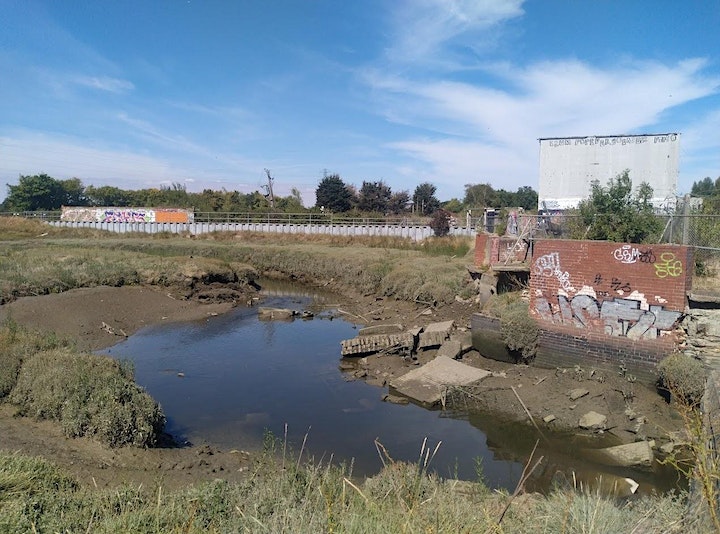 Part of the walk leaves the town and winds through an abandoned industrial area (a mill) that’s located on a saltmarsh. When we were standing on this bridge recently I showed Rob a sketch of birds who like salty wet muddy scrubby land, and he said Oh we’re not really on the saltmarsh yet, and then a pink-footed goose flew in to support me.
Part of the walk leaves the town and winds through an abandoned industrial area (a mill) that’s located on a saltmarsh. When we were standing on this bridge recently I showed Rob a sketch of birds who like salty wet muddy scrubby land, and he said Oh we’re not really on the saltmarsh yet, and then a pink-footed goose flew in to support me.
So that is the saltmarsh, but when you make the detour round the site of the mill and come out onto the river, the perspective is quite different. When there’s been no rain it can look like this, or it can look green and verdant. The Roach empties into the River Crouch, after passing the final resting place of Darwin’s ship the Beagle in Paglesham. We don’t get that far.
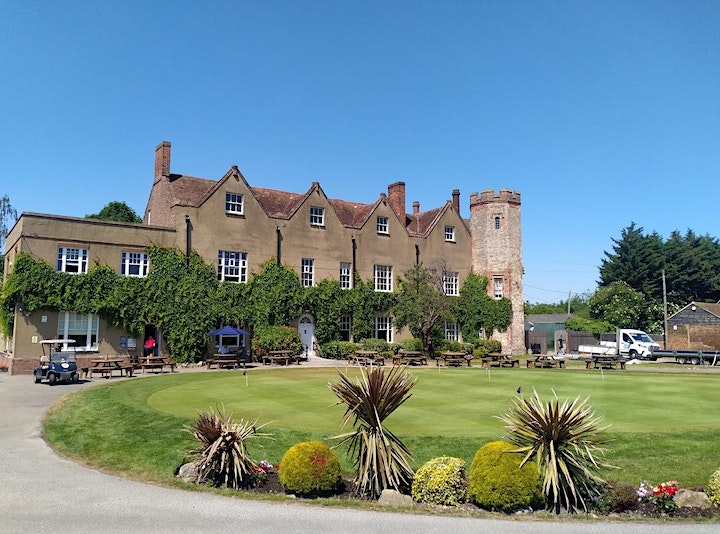 The walk is 5 miles in order to take in Rochford Hall, home to dastard Richard Rich in Tudor times, as well as a town-centre with houses you will recognise if you know ‘New England’, the variably green and brown route to the river and then the estuary-river, where houses are distant and few. We come back to town through a good field.
The walk is 5 miles in order to take in Rochford Hall, home to dastard Richard Rich in Tudor times, as well as a town-centre with houses you will recognise if you know ‘New England’, the variably green and brown route to the river and then the estuary-river, where houses are distant and few. We come back to town through a good field.
But what’s there for me to talk about?The New England connection is key. Margery Allingham called Essex the nursery of Non-conformism. John Winthrop, a Puritan founder of the Massachusetts Bay Colony, lived just outside Rochford.There is a plaque to a local martyr of Bloody Mary’s rampage against all Protestants. 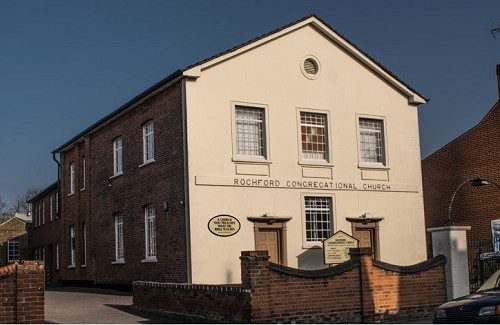 The plainness of the Congregationalist church recalls its Puritan roots: separatists who tried making a colony in the Netherlands and later voyaged on the Mayflower to found the Plymouth Colony. The Civil War was in great part an argument about how the state church of England should be; some were fed up enough to leave the country altogether, but many others stayed and formed new sects, almost always with the idea of making church a more democratic (less-, or even anti- hierarchical) institution. Wesleyans (Methodists) were important in Rochford, and out of them grew a sect called the Peculiar People. Meanwhile the Church of England remained in the old churches, and Rochford has a pretty one at St Andrew’s.
The plainness of the Congregationalist church recalls its Puritan roots: separatists who tried making a colony in the Netherlands and later voyaged on the Mayflower to found the Plymouth Colony. The Civil War was in great part an argument about how the state church of England should be; some were fed up enough to leave the country altogether, but many others stayed and formed new sects, almost always with the idea of making church a more democratic (less-, or even anti- hierarchical) institution. Wesleyans (Methodists) were important in Rochford, and out of them grew a sect called the Peculiar People. Meanwhile the Church of England remained in the old churches, and Rochford has a pretty one at St Andrew’s.
Nowadays we refer to Protestant denominations without thinking what they meant when founded – not only theologically but in terms of society’s dividing itself up into groups with different customs. Now this impulse to cavil and divide goes on in arguments about ‘politics’, but that’s also what religious dissenting was about. I want to talk about their ideas about women, since Non-conformism – especially Puritanism of course – has a lot to answer for in the present, not only for women but for anyone outside the patriarchal mould.
Do consider coming on the walk on 28 October. Rochford is about 50 minutes east of London on a train journey with views of fields and villages. Wear shoes with good soles, as the pathways could be muddy (though Essex is England’s driest county). We’ll have a half-hour break at a pub when we leave town for the marshes.
Thanks to the Rochford Town Team for creating a website with themed walks, good photos and especially for videos giving town history snippets in current residents’ own voices. Also thanks to authors of books about Essex that resist the stereotyping referred to earlier: Strange Magic, a novel by Syd Moore, and Low Country, by Tom Bolton, spring immediately to mind.
PS: The Manningtree witch-craze walk is on again in November, when I hope the landscape will be suitably bleak.
—Laura Agustín, the Naked Anthropologist

